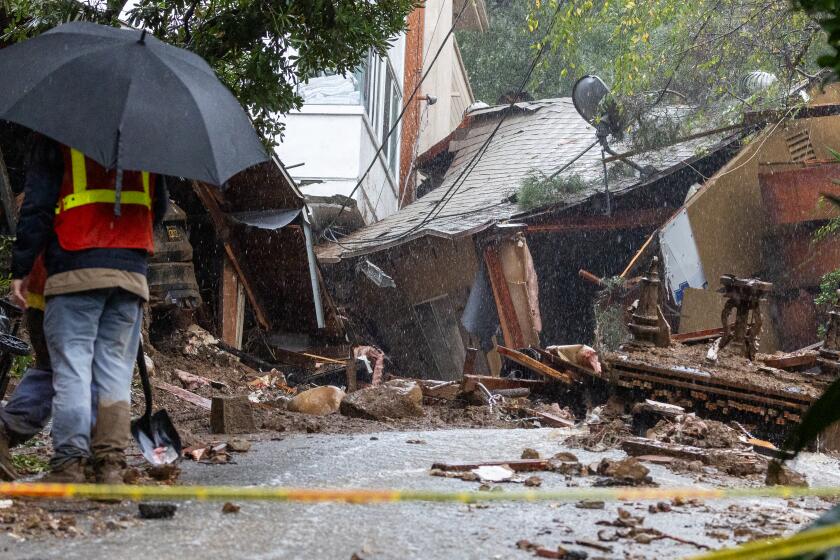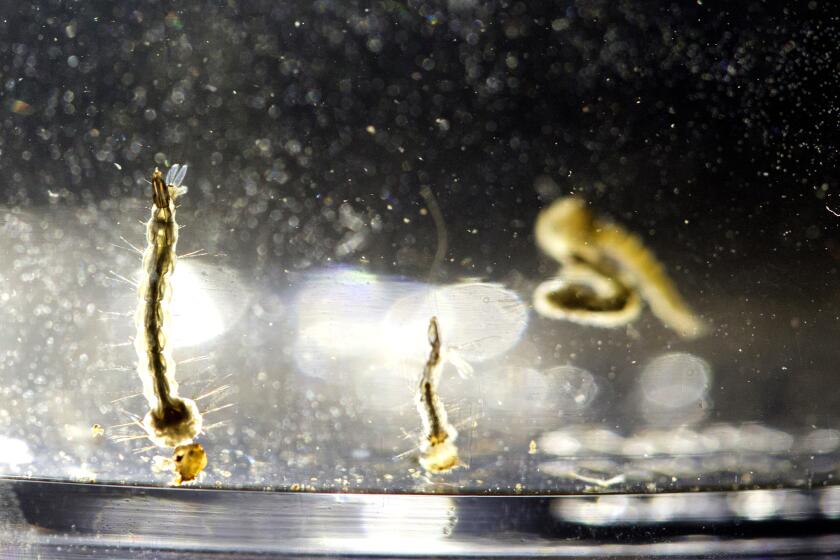Lucy Jones says this is the most important thing you can do to prepare for a quake

People, not kits. If you really want to be ready for the next big earthquake, forget the earthquake kit and go talk to your neighbors.
All Southern Californians know we have earthquakes and that we should do something to be ready for them. But we have very different opinions about what an earthquake means to us and what we should do about them.
If you’ve never felt a strong earthquake, your fear may be about the moment of the earthquake itself. The unseen threat that could trap you in a pile of rubble at an unpredictable time taps into our primal fears of the unseen predator. This is why people keep searching for earthquake prediction even though good building codes do more to save lives.
First responders and emergency managers focus on the immediate aftermath. They have seen too many people begging for water after a disaster. In the Red Cross shelters, they’ve seen the necessity of medications and the emotional benefits of comfort items. They want everyone to have a kit to reduce this pain.
But to those who study disasters and their impacts — something I’ve dedicated my professional life to as a researcher in seismology at the U.S. Geological Survey and Caltech, and now with the Dr. Lucy Jones Center for Science and Society — a disaster is something much bigger than the immediate devastation or even those first few days or weeks.
The real impact is seen in how the community recovers from the disaster. Does it return to prosperity? Or does the community fade away as its people lose hope?
We have seen impacts that last years or even decades. We’ve seen neighborhoods and towns that never recover and cities that really struggle. San Francisco before the 1906 earthquake was the only city that mattered on the West Coast, but you could argue that it took the rise of Silicon Valley nearly a century later for it to regain its standing.
We also see impacts on individuals stretching out over longer times. It is no surprise that personal bankruptcies and small business failures increase after disasters. Disaster insurance is an underutilized resource, and few small businesses can afford the expected large losses in a major disaster. But a recent study also found a 23% increase in suicides in counties where a major disaster was declared for three years after the event.
The path to recovery after a disaster is created by people. People who choose to stay in a damaged neighborhood. People who choose to offer a place to stay to someone whose home is being repaired. People who choose to support their local businesses and make sure they can stay open and viable. Social scientists have been able to demonstrate that communities with a high level of social capital, where people are connected to one another, recover more quickly and more completely after disasters.
Connecting with people we live near is no longer as obvious as it once was. Because we can electronically stay connected with friends and families even when we move to a new town, we do not have as strong a need for human connection driving us to start new relationships with our neighbors. Those distant friends can help us after a disaster — perhaps giving us the ability to leave the devastated community. The result is one less person available to help that community recover.
If Southern California will continue to be a place we want to live in after the earthquake, we need our fellow Southern Californians to choose to stay when our infrastructure is damaged and our economy is disrupted, and choose to work together to rebuild. Communities recover because community members choose to commit themselves to that recovery. That commitment comes from a sense of connectedness, and that is best created before the disaster.
How do we do that? There are as many ways as there are relationships, but here are some ideas to start:
- Host a block party or neighborhood happy hour. You can have a discussion of who has a long commute and might not be able to get home or who has medical experience. You are developing resources to help, and you are also getting to know each other and strengthening your relationships.
- Create a building or block private Facebook group where you can share planning. This is also a great way to communicate after the event as long as you can connect to the internet.
- Work with the organizations where you already connect with other people. Perhaps that is a mosque or church, a reading group or community choir. Think about how you could help one another. Have you ever talked about disaster preparedness there? Have those conversations now.
- Then help that organization connect with other organizations in the community. How many churches have another faith community on the same block? What if you could help each other? Bonus: You get to know each other better.
- Think about your disaster supplies (those kits I maligned at the beginning). Do you want those to be things you hoard or things you share? Neighborhoods that plan together and help one another after the event will be the neighborhoods that don’t have abandoned homes and sagging property values two years after the earthquake.
When authorities encourage you to get ready for an earthquake, they often try to focus on individual actions, because, well, they are talking to individuals. So we hear, “Get a kit!” “Make a plan!” “You need to protect your family!” And although it is not intentional, this can become a message of isolation, that you will be alone.
Get earthquake-ready in six weeks
From building a kit to buying insurance, our Unshaken newsletter course will help you prepare.
You may occasionally receive promotional content from the Los Angeles Times.
If you stay alone, believing that your neighbor may become your enemy, you will create a self-fulfilling prophecy and your neighbor won’t be helping you.
So before you think about supplies, go talk to your neighbor. Make the meaningful connections that mean you will help each other after the earthquake and be part of keeping Southern California a place we want to live. The relationships you form and your sense of belonging will be the driver to our hastened recovery.
More to Read
Get earthquake-ready in six weeks
From building a kit to buying insurance, our Unshaken newsletter course will help you prepare.
You may occasionally receive promotional content from the Los Angeles Times.







